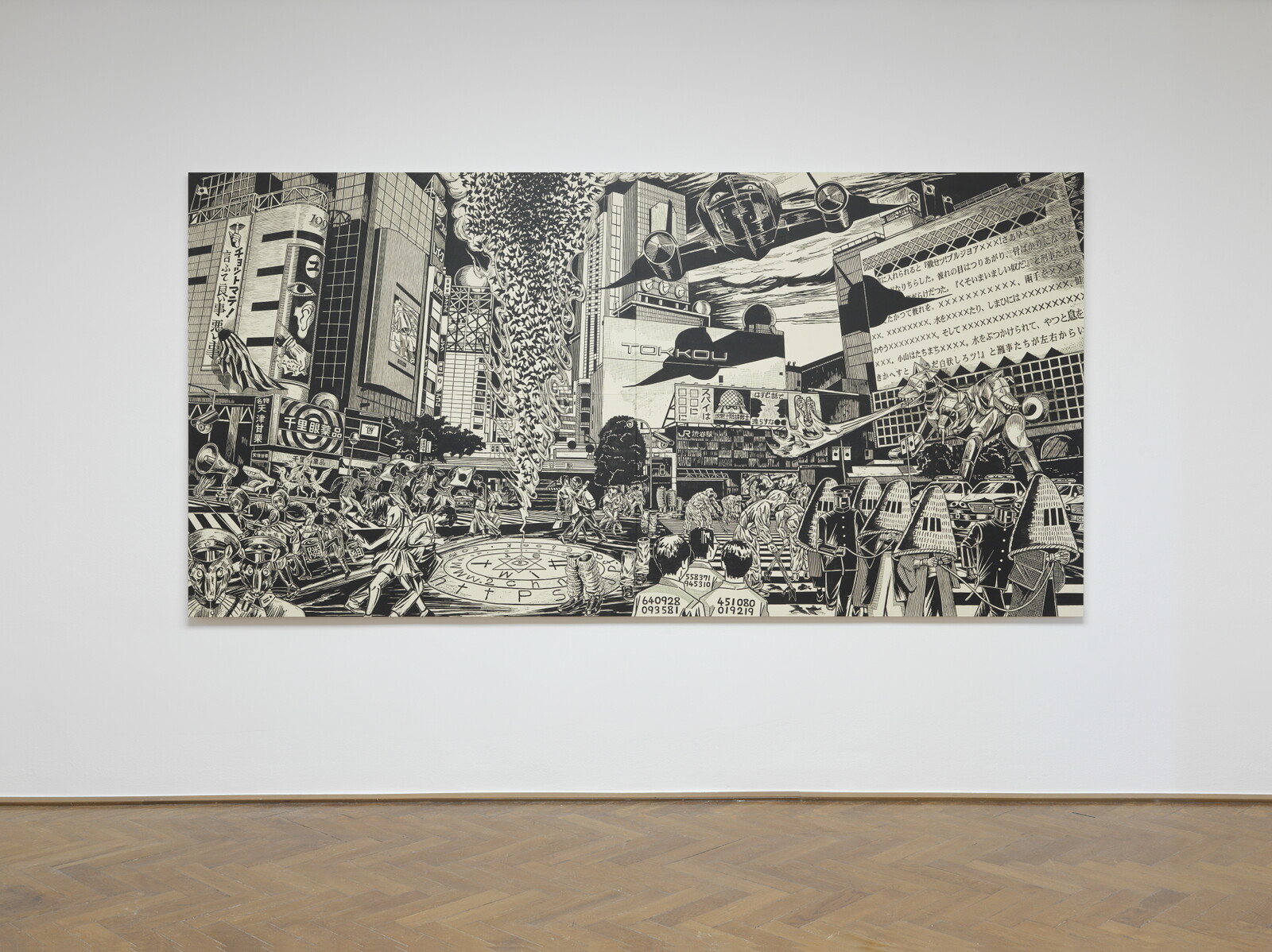Categories
Subjects
Authors
Artists
Venues
Locations
Calendar
Filter
Done
January 5, 2024 – Review
35th Ljubljana Biennale of Graphic Arts, “from the void came gifts of the cosmos”
Kate Sutton

When Ibrahim Mahama agreed to serve as artistic director of the 35th Ljubljana Biennale of Graphic Arts, he sought inspiration on a domestic scale. The simple conceptual sketch he prepared for this edition—titled “from the void came gifts of the cosmos”—shows a rudimentary bedframe, with a few unidentified objects stashed underneath. This curatorial approach attempts to reclaim an everyday architectural recess from the realm of monsters and recognize it instead as a space of potential. But dark things come from under the bed, the darkest of which may be nothing at all.
Mahama applies the metaphor of the void not only to architectural and ideological infrastructures, but also to emancipatory movements that operate within structures of colonial domination. Chief among these is the Non-Aligned Movement: a political experiment that rejected the either/or imperialism of the Cold War era in favor of a multilateral understanding of the world. Its foundations were laid at the Bandung Conference in 1955, the same year that the Ljubljana Biennale of Graphic Arts launched. Fresh from its split and subsequent rapprochement with the USSR, Yugoslavia offered a meeting ground for representatives from both sides of the Iron Curtain, and the biennial was expressly crafted to strengthen …
July 19, 2019 – Review
The 33rd Ljubljana Biennial of Graphic Arts
Tom Jeffreys

Question: How do hedgehogs have sex? Answer: very carefully.
Animals are represented at every turn across the 10 venues of the Ljubljana Biennial of Graphic Arts. In the main building, the International Centre of Graphic Arts (MGLC), vitrines contain back issues of Slovenian satirical magazine Pavliha, its pages overflowing with lions and cows, lobsters and giraffes. An owl with a quill pen sinks its hooked bill into the ear of a man in a top hat. Upstairs, Sachiko Kazama’s punningly titled large-scale woodcut print Nonhuman Crossing (2013) shows a dystopian Tokyo alive with rat-faced soldiers, birds with human legs, and humans with beaks and wings. War-Pup (2005), also by Kazama, is a group portrait of fluffy white puppies wearing gas masks. “The harshest of all voices is the voice of the ass,” says an imam in Lawrence Abu Hamdan’s film The All-Hearing (2014) about Islam and “loudspeaker libertarianism” in Cairo. The biennial’s logo is a hedgehog: its jaunty form a striking marker outside every venue.
We should not be surprised. The curatorial debut of the collective Slavs and Tatars, best known for their publishing and research projects, the 33rd edition of the biennial is an exploration of satire. With its etymological roots …